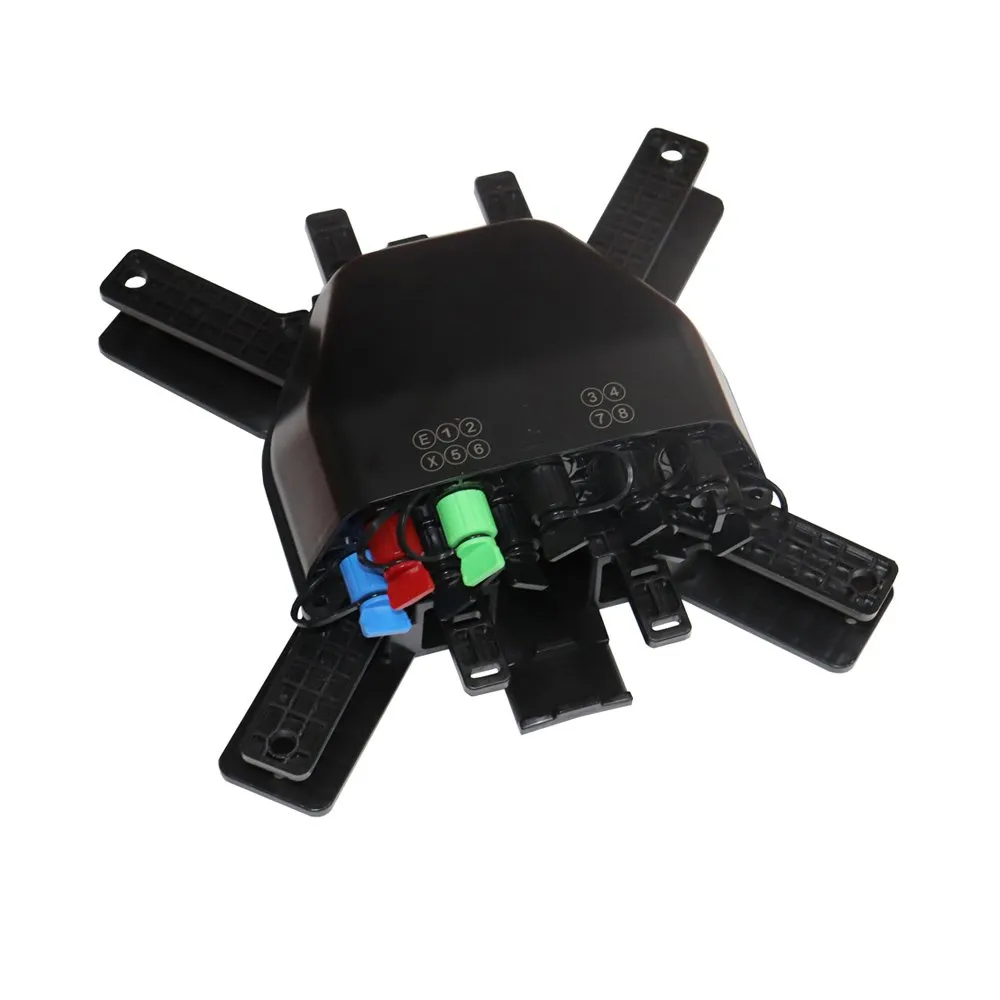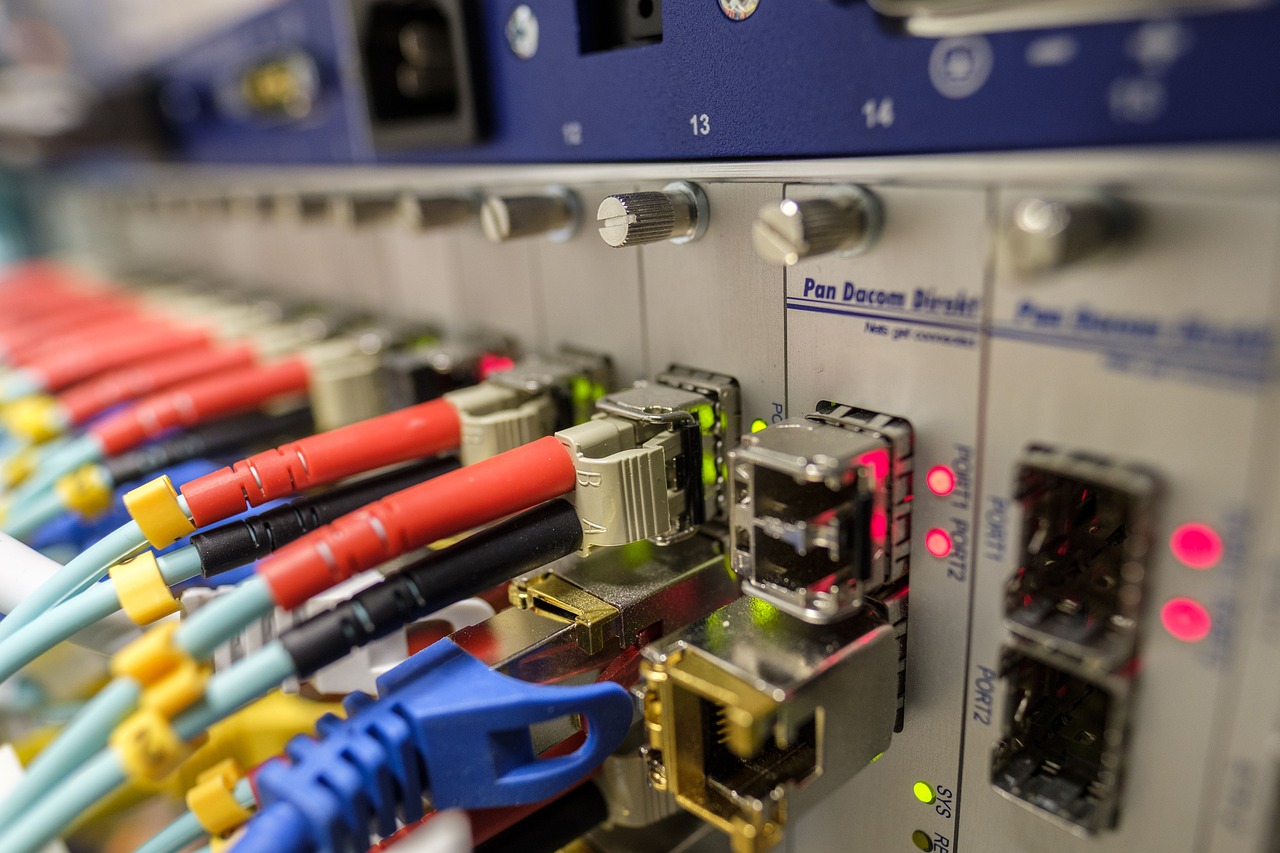5 Essential Features of Outdoor IP68 FTTX 10 Ports Non-open Pre-connectorized Fiber Access FastConnect Terminal Box

A Quick Introduction to the Marvels of Modern Connectivity
In today's fast-paced world, staying connected is more important than ever. Whether it's for work, education, or simply keeping in touch with loved ones, reliable connectivity is a necessity. This brings us to the Terminal Box, a crucial component in the network infrastructure that facilitates this seamless connectivity.
Why We're Talking About This Terminal Box
My personal journey with connectivity has led me to appreciate the vital role that the Terminal Box plays in ensuring uninterrupted communication. From struggling with unreliable connections to experiencing the transformative power of advanced technology, I've witnessed firsthand how this small yet mighty device can make a significant difference.
The Role of FTTX in Today's World
FTTX, which stands for Fiber to the X, is revolutionizing modern connectivity by bringing high-speed fiber-optic networks directly to homes and businesses. This innovative approach ensures faster and more reliable internet access, laying the foundation for a digitally connected future.
1. The Magic of IP68 Protection
When it comes to outdoor terminal boxes, the term IP68 holds significant importance. But what exactly does IP68 mean?
What Does IP68 Mean?
In simple terms, the IP68 rating signifies that the terminal box is completely dust-tight and can withstand long-term immersion in water under specified conditions. The "6" in IP68 indicates the highest level of protection against dust, while the "8" denotes its ability to resist continuous submersion in water beyond 1 meter. This robust protection ensures that the internal components remain safe from environmental elements, making it ideal for outdoor installations.
Breaking down the technical terms
The "IP" in IP68 stands for "Ingress Protection," a standard rating that classifies the degree of protection provided by enclosures against solid objects and liquids. Understanding this rating system is crucial for ensuring the reliability and durability of outdoor terminal boxes.
The Benefits of Having IP68 Protection
The significance of IP68 protection becomes evident in real-life scenarios where unpredictable weather conditions or environmental factors pose a threat to connectivity. Whether it's heavy rain, dust storms, or extreme temperatures, an IP68-rated terminal box ensures uninterrupted performance, safeguarding critical connections when they are needed most.
Real-life scenarios where IP68 saves the day
Imagine a scenario where a sudden downpour floods the area where fiber access points are installed. Thanks to the robust IP68 protection, the terminal box continues to function flawlessly, preserving essential connectivity even amidst adverse weather conditions.
2. Why FastConnect Changes the Game
As we delve deeper into the realm of modern connectivity, it's essential to shine a spotlight on FastConnect technology and its game-changing impact on network infrastructure.
The Basics of FastConnect Technology
FastConnect is a cutting-edge innovation designed to streamline the process of fiber optic connections. In simple terms, it revolutionizes the way fibers are terminated, eliminating the need for time-consuming splicing processes. By employing advanced mechanical splice technology, FastConnect enables quick and efficient fiber terminations, significantly reducing installation time and complexity.
How FastConnect works in simple terms
Imagine FastConnect as a seamless plug-and-play solution for fiber optic connections. It involves precise alignment and secure mating of fibers without intricate fusion splicing equipment. This simplified approach not only accelerates deployment but also ensures consistent and reliable performance across various network configurations.
The Advantages of FastConnect in Everyday Use
The real magic of FastConnect unfolds in everyday scenarios where swift and reliable connectivity is non-negotiable. From personal experience, I've witnessed how FastConnect simplifies complex installations, especially in challenging environments where traditional splicing methods would be impractical.
Personal anecdotes of FastConnect in action
During a recent network expansion project, the efficiency of FastConnect became evident as we seamlessly integrated new fiber access points into existing infrastructure. This not only accelerated the deployment process but also minimized service disruptions, showcasing the practical advantages of this innovative technology.
Streamlined installations
Enhanced reliability
Minimized service disruptions
3. The Convenience of Pre-connectorized Systems
As we continue our exploration of essential features in modern connectivity infrastructure, it's crucial to shine a light on the remarkable convenience offered by pre-connectorized systems.
Understanding Pre-connectorized Systems
The simplicity behind pre-connectorized systems lies in their ready-to-deploy nature. These systems come equipped with factory-terminated connectors, eliminating the need for on-site field terminations. This plug-and-play approach significantly reduces installation time and minimizes the margin for error, making it an ideal choice for both experienced technicians and those new to fiber optic deployments.
The simplicity behind the technology
Pre-connectorized systems essentially arrive at the installation site in a state of readiness. With connectors already in place and tested for optimal performance, the deployment process becomes a seamless endeavor, ensuring consistent connectivity without the complexities associated with traditional connector terminations.
How Pre-connectorization Makes Life Easier
Drawing from my experience with pre-connectorized systems, I've witnessed firsthand how this approach simplifies installations across diverse environments. In urban settings where space constraints and time-sensitive projects are common, pre-connectorized systems offer unmatched convenience. Additionally, in rural or remote areas where access to specialized termination equipment may be limited, these systems prove invaluable in accelerating network expansions.
Examples from my experience with pre-connectorized systems
During a recent project involving network upgrades in a densely populated urban area, the use of pre-connectorized systems streamlined the deployment process. This not only reduced labor costs but also ensured that disruptions to daily activities were kept to a minimum. Furthermore, when extending connectivity to underserved rural communities, pre-connectorized systems facilitated rapid installations without compromising on reliability or performance.
4. The Versatility of 10 Ports in FTTX Applications
As we venture into the realm of fiber optic connectivity, it becomes evident that the number of ports in FTTX applications plays a pivotal role in shaping the efficiency and scalability of network deployments.
Exploring the Importance of Multiple Ports
In the context of FTTX applications, the presence of multiple ports signifies enhanced connectivity capabilities. More ports equate to increased capacity for accommodating additional subscribers or connecting various network segments. This scalability is essential for future-proofing network infrastructure, ensuring that it can adapt to evolving demands without requiring extensive overhauls.
Why more is better in connectivity
The versatility offered by 10 ports opens doors to seamless expansion and diversification of network connections. Whether it's catering to a growing subscriber base or establishing redundant pathways for enhanced reliability, having ample port availability paves the way for agile and adaptable network configurations.
Real-World Applications of 10 Ports
In my experience, the impact of 10 ports in FTTX applications has been profound, especially in scenarios where dynamic connectivity requirements demand flexibility and foresight.
How I've seen 10 ports make a difference
During a recent urban redevelopment project, the deployment of an outdoor IP68 FTTX terminal box with 10 ports proved instrumental in accommodating new residential and commercial developments. The surplus port capacity not only facilitated immediate service provision but also allowed for future expansions without necessitating substantial infrastructure upgrades.
Furthermore, in educational institutions where robust connectivity is paramount, the presence of 10 ports enabled seamless integration of additional access points without disrupting ongoing operations. This adaptability ensured uninterrupted learning experiences while laying the groundwork for potential network growth as student enrollment surged.
5. The Importance of Outdoor Durability
In the realm of connectivity infrastructure, outdoor durability is a non-negotiable attribute for terminal boxes designed to withstand the rigors of external environments.
What Makes a Terminal Box Outdoor-Ready
The Outdoor-ready nature of a terminal box hinges on several key features that collectively ensure its resilience in challenging conditions. These features include robust IP68 protection, corrosion-resistant materials, UV-stabilized housing, and secure cable management mechanisms. Each element plays a vital role in fortifying the terminal box against the elements, safeguarding critical connections from environmental hazards.
The features that matter most
IP68 Protection: Ensuring dust-tight and water submersion resistance.
Corrosion-Resistant Materials: Withstanding exposure to harsh outdoor elements.
UV-Stabilized Housing: Preserving structural integrity under prolonged sun exposure.
Secure Cable Management: Safeguarding cable connections from physical damage and environmental stress.
Stories of Outdoor Durability in Action
The true test of outdoor durability unfolds in real-life scenarios where terminal boxes face formidable challenges and emerge victorious, preserving connectivity when it matters most.
Times when outdoor durability was a lifesaver
During a severe storm that swept through our region, the robust outdoor design of a terminal box proved to be a lifesaver. Despite torrential rain and strong winds, the Outdoor-ready terminal box maintained uninterrupted connectivity for essential services, ensuring that communication channels remained open during the crisis.
In another instance, an unexpected power outage led to flooding in an underground utility chamber housing critical network equipment. Amidst this chaos, the outdoor-ready terminal box stood resilient, shielding vital connections from water ingress and enabling swift restoration of services once power was restored.
Wrapping Up: The Future is Bright with Advanced Terminal Boxes
Reflecting on How These Features Impact Our Lives
As we reflect on the remarkable features of outdoor IP68 FTTX 10 Ports non-open pre-connectorized fiber access FastConnect terminal boxes, it becomes evident that these advancements are not just technological marvels, but integral components shaping our daily lives. The seamless integration of IP68 protection, FastConnect technology, pre-connectorized systems, and the versatility of 10 ports has redefined connectivity infrastructure, ensuring that our digital interactions remain uninterrupted and reliable.
A personal take on the future of connectivity
Looking ahead, the future of connectivity appears promising with advanced terminal boxes leading the way. As technology continues to evolve, these innovative solutions will play a pivotal role in expanding access to high-speed internet, enabling transformative applications such as telemedicine, smart city initiatives, and immersive educational experiences. Embracing these advancements means embracing a future where seamless connectivity transcends barriers and empowers individuals and communities worldwide.
The Takeaway for Our Readers
The significance of these advancements extends beyond technical specifications; it directly impacts the way we connect and communicate in an increasingly interconnected world. By understanding and appreciating the capabilities of outdoor terminal boxes, readers gain insight into the foundation that supports their digital interactions. It's essential to recognize that these advancements are not just about technology; they are about enhancing human connections and fostering progress in every aspect of our lives.
Why you should care about these advancements
By acknowledging the impact of outdoor terminal boxes on our daily experiences, readers can actively participate in shaping a future where reliable connectivity is accessible to all. Whether it's advocating for improved infrastructure or embracing innovative solutions in their communities, understanding the significance of advanced terminal boxes empowers individuals to contribute to a more connected and inclusive world.
In conclusion:
Embracing advanced terminal boxes shapes a future of enhanced connectivity.
Understanding their impact empowers individuals to advocate for improved infrastructure.
These advancements pave the way for a more connected and inclusive world.


